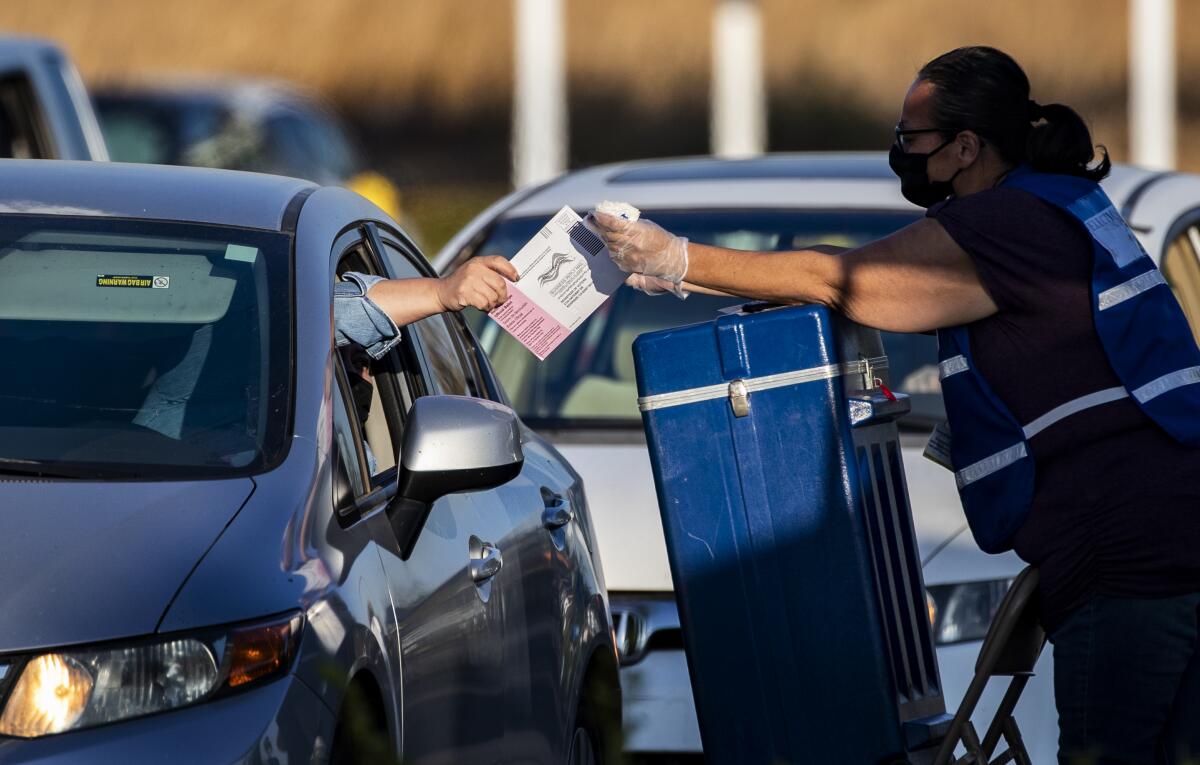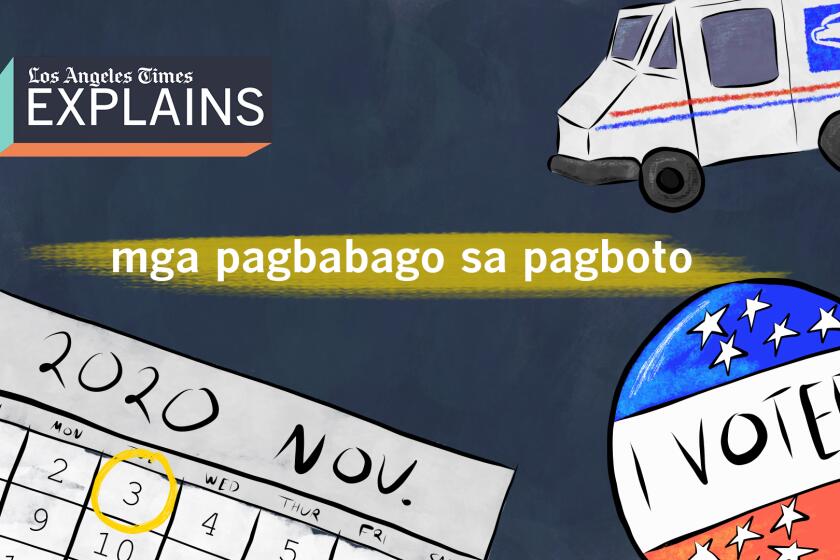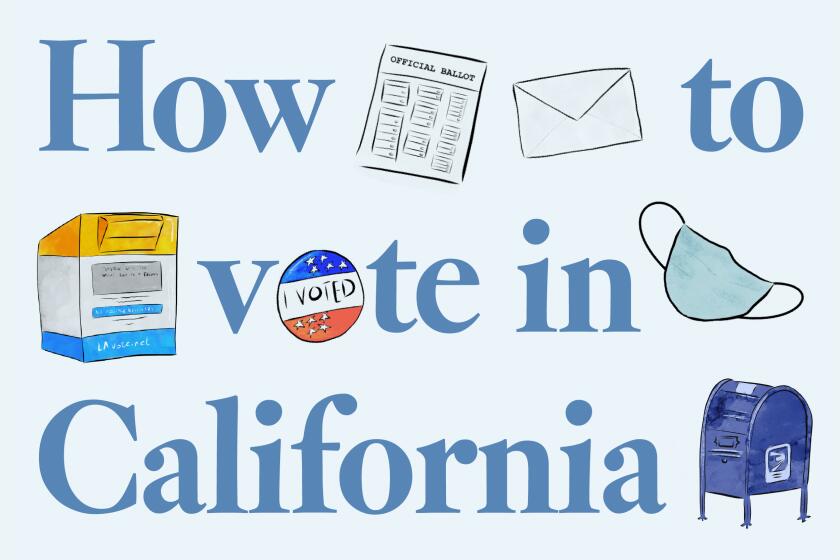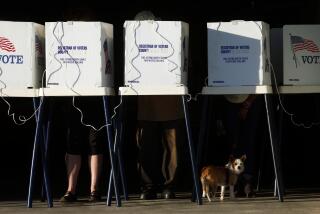What you should know about how and when California counts ballots

- Share via
SACRAMENTO — The task facing election officials in California’s 58 counties is daunting: Collect, verify and count the votes on as many as 22 million ballots; don’t start counting until the polls close at 8 p.m. on Tuesday; and quench the thirst of the public for final results as soon as possible.
While the long wait for election results is unfamiliar in other parts of the country, it’s common practice in the Golden State. For most of the last decade, the wait for final results has lasted for close to a month as new election laws have expanded voter access and the number of ballots cast has increased.
It may be frustrating for those waiting to declare victory, but it’s how California elections have been designed to work.
California has more voters than any state
California has 22 million registered voters — not only more voters than any other state but more voters than there are residents in 48 states.
Simply put, more voters mean more ballots cast and more time needed to tally the votes.
And the rising number of voters has not been matched by a similar increase in funding for election administration. For much of the last two decades, state government budget shortfalls have meant less money for counties to spend on election-related expenses. The budget signed by Gov. Gavin Newsom in June earmarked largely one-time money, from state and federal sources combined, for this election. But resources have not kept up with demand as more Californians register and cast ballots.
Paper voting records mean less automation
In the aftermath of the 2000 presidential election recount, a number of states moved away from paper voting systems, in which holes were punched in cards, and chose new electronic voting using touchscreens. A few California counties also embraced those systems, purchased with state and federal voting assistance money.
But it didn’t last as security and accuracy concerns were raised and demand grew for every vote to produce a clear, paper record that a voter could check for accuracy. The Legislature mandated in 2004 that machines produce a paper record of every vote, and current models only mark paper ballots instead of recording and transmitting votes.
Voter advocacy groups applauded California’s leadership in requiring paper voting records. Still, that means ballots that must be tabulated by election workers. The most popular ballot design, which requires voters to use a pen to fill in an oval, is counted by an optical scanner that reads each ballot and each race.
California’s steady rise in absentee voters
An ever-increasing number of Californians prefer to vote somewhere other than a traditional polling place.
In 2002, California removed all barriers to absentee voting, allowing any voter to permanently receive a ballot in the mail. The two decades that followed saw a gradual shift in voter preferences, with a majority of Californians having voted remotely in every statewide primary and general election since 2012. Three rural counties — Alpine, Plumas and Sierra — conduct all elections with mail ballots.
But absentee voting has grown even more since 2016, as counties signed on to an optional state law that allows traditional polling places to be shuttered in exchange for mailing every registered voter a ballot and offering regional “vote centers.” Fifteen counties, representing more than 11 million registered voters, have signed on to the Voter’s Choice Act.
In other words: Even without the decision this year by legislators and Newsom to mail every voter a ballot as part of the state’s COVID-19 response, half of California’s registered voters would have already received one under existing law.
How voting works in: English, Spanish, Chinese (Mandarin), Korean, Farsi, Armenian, Chinese (Cantonese), Tagalog, Vietnamese, Hindi, Japanese, Thai, Russian and Khmer.
The grace period for ballot mail delivery
In 2014, California enacted a three-day grace period for a ballot to arrive at a local election office, as long as the ballot is postmarked by election day. Supporters of the law pointed out that federal and state taxes are considered to be paid on time if postmarked by April 15 and a ballot should be held to the same standard.
This year, lawmakers have extended the ballot delivery deadline, a one-time change, to Nov. 20 — 17 days after election day. The modification was made to address concerns about how public health requirements could slow ballot processing and delays experienced by the U.S. Postal Service. State officials also added a new fail-safe to the process this year, requiring the use of barcodes on vote-by-mail envelopes that can verify the date of return when the postmark is missing or illegible.
The practical effect of these changes is that the final outcome in close races could be unclear until almost Thanksgiving.
Counting begins on election night
Within days of when ballots were mailed to voters in early October, they’ve been flooding back to county election offices. But there are strict limits on what local officials can do with those ballots before the election is officially over.
Prior to the close of the polls at 8 p.m. on Nov. 3, ballots can be readied for counting by checking signatures on envelopes, removing ballots from the envelopes and then scanning them to ensure no stray marks were made. But the actual vote tally must wait until election night.
The first results Californians see are those from ballots that arrived early and those cast at voting locations on election day. Ballots that arrived too late for election officials to do all the prep work have to wait. And all of this means results can take several days.
Signature problems can be fixed
Errors made by an absentee voter signing the envelope — including a missing signature or one that doesn’t match what’s on file with local or state officials — are a concern across the United States when so many voters are choosing to skip in-person voting.
California, unlike some states, offers voters the chance to correct the problem. If there’s no signature, election officials must give the voter until Nov. 11 — eight days after election day — to fix the problem. If the signatures don’t match, the voter must be notified at least eight days before election results are certified. With certification on Dec. 3, that means voters must be contacted by Nov. 25 and given until Dec. 1 to resolve the signature discrepancy.
This process has not led to surprise outcomes in prior elections. But it serves as a reminder that the election won’t truly end until next month.
More to Read
Sign up for Essential California
The most important California stories and recommendations in your inbox every morning.
You may occasionally receive promotional content from the Los Angeles Times.














